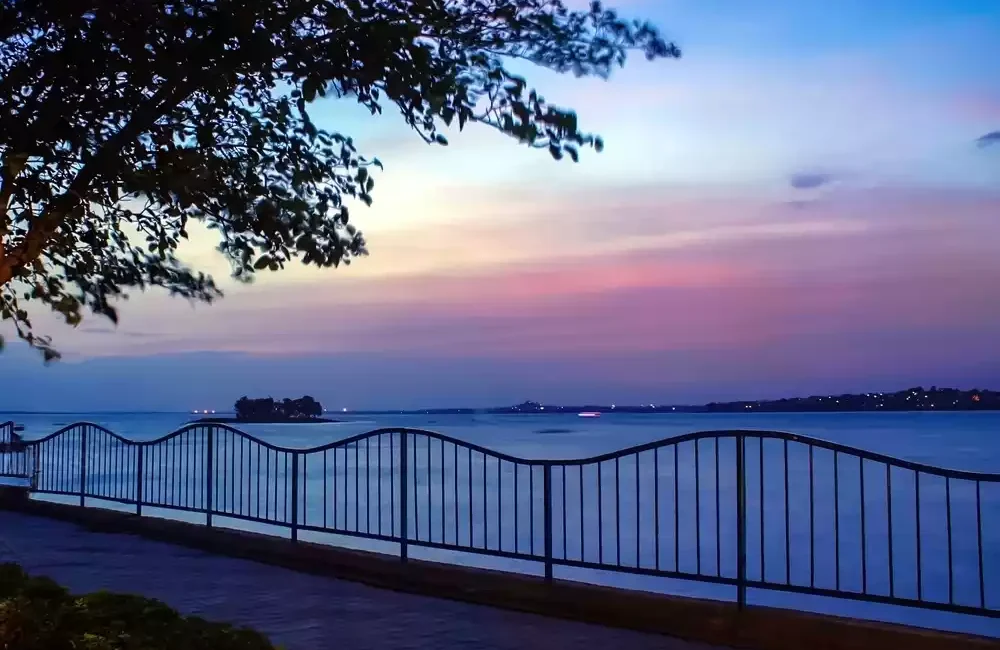Bhopal District: An In-Depth Exploration
Introduction
Nestled in the heart of India, Bhopal district is a fascinating blend of historic grandeur, vibrant culture, and modern development. As the capital of Madhya Pradesh, Bhopal holds a strategic and cultural significance that is reflected in its rich heritage, diverse demography, and dynamic lifestyle.
Demography
Bhopal district is a melting pot of various communities and cultures. The population, which exceeds 2 million, includes Hindus, Muslims, Christians, Sikhs, and Jains. The linguistic diversity is equally remarkable, with Hindi, Urdu, and English being widely spoken. The cosmopolitan nature of Bhopal is evident in its festivals, religious practices, and day-to-day interactions, showcasing a harmonious blend of tradition and modernity.
Culture
Festivals and Traditions
Bhopal's culture is an amalgamation of its historical roots and contemporary influences. The city is known for celebrating a variety of festivals with great fervor, including Diwali, Eid, Christmas, and Holi. Each festival is marked by unique rituals, music, dance, and cuisine, reflecting the district's pluralistic ethos.
Art and Craft
Bhopal has a rich tradition of arts and crafts, including intricate Zardozi embroidery, Batik print textiles, and beautifully crafted silver jewelry. The Bharat Bhavan, a multi-arts complex, serves as a cultural hub, hosting art exhibitions, theater performances, and literary events.
Geography and Topography
Bhopal district is characterized by its varied topography, which includes hills, forests, lakes, and plains. The Vindhya and Satpura ranges surround the district, contributing to its scenic beauty and biodiversity.
Natural Attractions
- Upper Lake (Bhojtal): One of the largest artificial lakes in India, offering boating and picturesque views.
- Lower Lake (Chhota Talab): A serene spot for recreation and relaxation.
- Van Vihar National Park: A unique wildlife sanctuary situated within the city limits, providing habitat to various species of flora and fauna.
Cuisines
The culinary scene in Bhopal is a delightful reflection of its cultural diversity. The district offers a rich array of dishes that blend Mughal, Marathi, and tribal influences.
Signature Dishes
- Poha: A popular breakfast dish made from flattened rice, garnished with onions, coriander, and lemon.
- Biryani: Bhopal's take on this classic dish is known for its rich flavors and aromatic spices.
- Bhutte Ka Kees: A unique corn-based dish seasoned with spices, coconut, and milk.
- Jalebi: A sweet treat, often enjoyed with a glass of milk or rabri.
History
Ancient and Medieval Periods
Bhopal's history dates back to ancient times, with the city believed to have been founded by Raja Bhoj in the 11th century. The name 'Bhopal' is derived from 'Bhojpal', named after this legendary king who constructed the Bhojtal (Upper Lake).
Mughal and Nawabi Era
In the early 18th century, Bhopal became a princely state under the rule of the Afghan chieftain Dost Mohammad Khan. The Nawabi era, particularly under the leadership of Begums of Bhopal, saw the city flourish in architecture, culture, and governance. The iconic structures like Shaukat Mahal, Sadar Manzil, and Moti Masjid stand as testaments to this golden period.
Colonial and Post-Independence Period
Bhopal played a crucial role during India's struggle for independence. Post-independence, it merged into the Indian Union in 1949 and later became the capital of Madhya Pradesh in 1956. The district's modern history is marked by rapid urbanization and development, transforming it into a major educational and economic hub.
Poets and Authors
Bhopal has been home to many illustrious poets and authors who have contributed significantly to Indian literature.
Notable Figures
- Makhanlal Chaturvedi: A renowned poet and freedom fighter known for his patriotic verses.
- Agha Shahid Ali: An acclaimed Kashmiri-American poet who spent part of his life in Bhopal.
- Begum Qudsia Aizaz Rasul: An influential writer and politician who chronicled the Nawabi era of Bhopal.
Administration
Bhopal district is administratively divided into several blocks and tehsils, with a structured governance system ensuring efficient management.
Governance Structure
- District Collector: The chief administrative officer responsible for overall governance.
- Municipal Corporation: Oversees urban planning, infrastructure, and public services within the city.
- Zila Panchayat: Manages rural development and welfare programs across the district's villages.
Developmental Initiatives
The district administration has implemented various initiatives aimed at improving infrastructure, healthcare, education, and social welfare. Projects like Smart City Mission and Swachh Bharat Abhiyan have significantly enhanced the quality of life for Bhopal's residents.
Conclusion
Bhopal district is a unique confluence of history, culture, and modernity. From its ancient roots and royal heritage to its vibrant festivals and diverse cuisines, Bhopal offers a rich tapestry of experiences. The district's commitment to development and progress, while preserving its cultural legacy, makes it a compelling destination and a vital part of India's heartland.
